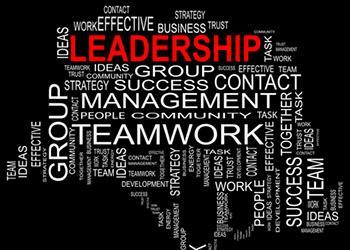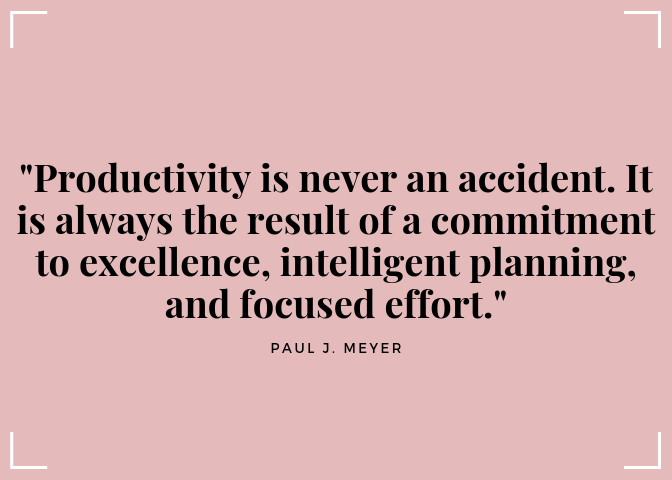Strategies for Focusing Your Nonprofit's Capacity Building Grant Request
One of the most controversial “asks” in the nonprofit sector, alongside general operating expenses, is the request for capacity building funds. It can be challenging to find a funder who will financially support capacity building. Unlike a programming request, an organization cannot point to a specific event and report, “The company served an additional 500 people by upgrading its customer relationship management system.” It is more challenging to quantify the impact of purchasing upgraded technology—but it is not impossible. A nonprofit’s superpower is what it already has: the organization’s mission and vision.
Capacity-building funding is central to American philanthropy and to a civil society. In order to thrive, nonprofit organizations need to be free to develop their skills and abilities—to get even better at what they do best.
The National Council of Nonprofits defines capacity building as “whatever is needed to bring a nonprofit to the next level of operational, programmatic, financial, or organizational maturity.” It is the type of funding that allows a nonprofit to advance its mission and act on its vision. Capacity building funding is central to American philanthropy and to a civil society. In order to thrive, nonprofit organizations need to be free to develop their skills and abilities—to get even better at what they do best. This is why capacity building is vital.
A nonprofit can enhance its capacity building requests in three ways: by focusing the lens on the organization’s mission; by expanding the lens to look at the organization’s vision; and by changing the lens to consider succession planning. All these elements can open funding streams that allow an organization to get even better at what it does best.
Mission Impossible - Without Full Capacity
When considering applying for capacity building grants, focus on the organization’s mission. This can be an effective way to frame a nonprofit’s funding request.
Suppose an organization provides adult daycare services for seniors in its community. In that case, the organization’s mission might be to provide quality programming that supports the social and mental wellness of area seniors for improved health outcomes. Perhaps the team is noticing that the demand for its nonprofit’s services is exceeding the staff’s availability. The nonprofit may need to purchase a volunteer management system or recruit and train more volunteers. Collaborate with the team to articulate the request that will help take the nonprofit to the next level of programmatic maturity.
To craft a persuasive capacity building request focused on the company’s mission, consider the following:
- Mission - What is the organization’s mission statement?
- Need - What does nonprofit need that it currently does not have in order to fulfill its mission?
- Data that supports this need - How does the team know the business needs this?
- Request - What is the nonprofit requesting? How much is the cost of each budget item? Include a budget breakdown for the funder.
- Return on investment - How will these capacity building funds help the nonprofit fulfill its mission? How does the team know?
In terms of data, consider what would have the most impact on the potential funder. For example, if the organization is applying to a financial organization, the applicant might refer to the bottom line—the cost of doing business. In April 2024, the Independent Sector, in cooperation with the Do Good Institute at the University of Maryland, reported that the estimated value of one volunteer hour in 2023 was $33.49, a 5.3% increase over 2022 (independentsector.org). How does that $33.49 contribute to the organization’s ability to fulfill its mission?
Capacity building starts and ends with a nonprofit’s mission. The mission is what the organization does best. Make it clear why funding this capacity building request will help the organization do its best for the target population. Show, don’t tell, a potential funder how it is impossible for the business to fulfill its mission without being at full capacity in a given area of the organization, such as volunteer management.
Vision Screening - Seeing up close and far away
Mission is seeing up close. It is what the nonprofit team does on a day-to-day basis. Vision is far-sighted; it is stepping back and looking at what the organization wants to accomplish over a period of years.
Suppose a company is a nonprofit that provides after-school mentoring for at-risk youth. The organization is receiving feedback that the needs of the students the team serves—and the needs of the mentors who serve them—are changing. Students need access to technology, and mentors need training on new tools and resources to best meet those demands. The company has been getting by with what is available, but it is time to step back and look at the bigger picture, to evaluate what could be possible for the organization and the people the team serves. It is time to review—or create—the organization’s strategic plan to identify and order the company’s needs.
The strategic plan is a nonprofit’s roadmap to success. It helps a company prioritize its needs by outlining its goals and identifying how the team plans to meet that vision. A strategic plan outlines an organization’s identified needs over time. But how does a nonprofit balance the needs outlined in a strategic plan alongside the needs that arise from day-to-day interactions with the people the organization serves?
When using a strategic plan to identify a vision-aligned capacity building funding request, consider the following:
- Vision - What is the nonprofit’s vision statement?
- Need - What are the organization’s immediate needs? How do these needs align with the nonprofit’s identified needs over the next 2-5 years?
- Data that supports this need - How does the team know these are the organization’s short-term and long-term needs? What are the data points? What is the nonprofit currently [not] able to do? Where are the gaps? How does the team know?
- Request - What does the nonprofit need to guide the organizational development? Can the organization do this work internally, or does the leadership team need to hire a consultant?
- Return on Investment - How will these capacity building funds help the nonprofit fulfill its vision? How does the team know?
In terms of data points, how does the organization evaluate current services? Does the team use qualitative tools (narrative feedback), quantitative tools (surveys with closed-ended questions), or mixed methods (a combination of the two)? In terms of the request, what does the company want and need this request to include? If the organization has a lot of competing needs, it can be helpful to hire a consultant to guide the team through the prioritizing process. Include that cost in the capacity building request.
Capacity building allows an organization to grow and meet the next level of operational maturity. Having—and using--a strategic plan is essential to a thriving and responsive nonprofit.
Succession Planning - What you don't know can hurt you
According to BoardSource’s latest Leading with Intent Report (2021), only 29% of nonprofits surveyed reported having a written succession plan in place (councilofnonprofits.org). While succession planning involves deliberate consideration of who will take over in the event of a retirement or other transition at the leadership level, succession planning is not an event (naming a successor); it is a process. If a nonprofit does not already have a succession plan in place or needs to update its plan, consider requesting capacity building funds to financially support this process.
The National Council of Nonprofits (councilofnonprofits.org) identifies ten planning tips for leadership transition, from engaging the board and the staff in meaningful conversation about managing intentional transitions in leadership to dedicating time and money to deliberate on-boarding. This planning incurs costs, and securing capacity building funds can make this process easier.
- Leadership - What are the organization’s current leadership roles?
- Need - Why does the nonprofit want to develop a succession plan? What would be the impact on the organization and its programming if the nonprofit does not have a succession plan? How would such chaos impact the company’s mission and vision?
- Data that supports this need - What is the organizational structure? How does the team decide who serves in each capacity? How many Board members does the organization have? Staff members? Volunteers? How many people does the nonprofit serve? How many team members serve in multiple roles?
- Request - How would the organization use capacity building funds? Break down the component costs, from creating an Emergency Leadership Transition Plan to developing new leaders to onboarding leaders.
- Return on Investment - How will these capacity building funds allow the nonprofit to fulfill its mission and vision? How will it save the company time and money in the long run?
Capacity building funds are necessary for securing the long-term health and survival of an organization. Data tells us that 71% of nonprofits are ill-prepared for a change in leadership, whether that change is planned or unexpected. Investing in purposeful succession planning using capacity building funds can help safeguard an organization, allowing the team to take the nonprofit to the next level of financial and organizational maturity.
Be intentional
The key to requesting capacity building funds is to be intentional. Know who the nonprofit is, who the nonprofit serves, and how the nonprofit serves (mission). Know where the organization is today and where it wants to be in 5-10 years (vision). Know who the leaders are today—and in five years (succession planning). All of these are part of capacity building. A contender is hard-pressed to complete a grant application or draft an LOI without addressing sustainability—how a team plans to stay afloat as an organization. Capacity building makes sustainability possible. By staying focused on the nonprofit’s mission and vision, an organization can craft a capacity building request that allows the team to get even better at what it does best.
Now that’s a superpower!











